Singapore, a dynamic city-state located at the southern tip of the Malay Peninsula, is renowned for its economic prosperity, cultural diversity, and innovative urban planning. Despite its small size of just 728.6 square kilometers, Singapore has carved out a significant role on the global stage, earning its nickname as the “Lion City.”
Table of Contents
Geography
Singapore’s strategic location in Southeast Asia has been a cornerstone of its success. Situated just north of the equator, it lies at the southern tip of the Malay Peninsula. The city-state is bordered by Malaysia to the north and Indonesia to the south, with the Strait of Johor separating it from Malaysia and the Singapore Strait connecting it to Indonesia.
Covering an area of 728.6 square kilometers, Singapore consists of one main island and 63 smaller islets, with ongoing land reclamation projects expanding its territory. The island’s landscape is characterized by a mix of lush greenery, urban developments, and coastal areas, providing a unique blend of nature and modernity.
States of Singapore
Singapore is a city-state, which means it is a sovereign state that consists of a single city and its surrounding territory. Unlike larger countries that are divided into states or provinces, Singapore does not have any states. It is centrally governed as a single entity.
Here’s the information about the regions of Singapore:
| Region | Places Included |
|---|---|
| Central Region | Marina Bay Sands, Gardens by the Bay, Orchard Road, Chinatown, Little India, Central Business District (CBD) |
| East Region | Changi Airport, East Coast Park, Katong, Bedok, Pasir Ris |
| North Region | Singapore Zoo, Night Safari, River Safari, Woodlands, Yishun |
| North-East Region | Punggol Waterway Park, Serangoon, Hougang, Sengkang, Tampines |
| West Region | Jurong Bird Park, Science Centre Singapore, Bukit Batok Nature Park, Holland Village, Clementi |
Historical Overview
Singapore’s history is a tapestry of diverse influences. The island’s earliest known history dates back to the 14th century when it was part of the Srivijaya Empire and later the Majapahit Empire. It was known as Temasek, a thriving trading port frequented by Chinese, Indian, and Arab traders. In 1819, Sir Stamford Raffles, an officer of the British East India Company, established Singapore as a British trading post. This strategic move transformed the island into a bustling port city, attracting merchants and immigrants from across Asia and Europe.
During World War II, Singapore fell to Japanese forces, a period marked by hardship and resistance. After the war, it returned to British rule until gaining self-governance in 1959 and merging with Malaysia in 1963. However, political and social tensions led to Singapore’s separation from Malaysia in 1965, resulting in its emergence as an independent republic. Under the leadership of its first Prime Minister, Lee Kuan Yew, Singapore embarked on a remarkable journey of nation-building and economic transformation, evolving from a developing nation into a global economic powerhouse.
Economic Success
Singapore’s economic journey is nothing short of miraculous. With limited natural resources, the city-state has relied on human capital, strategic planning, and robust governance to build a thriving economy. Key sectors include finance, manufacturing, and technology. The Marina Bay Sands, an iconic integrated resort, exemplifies Singapore’s commitment to tourism and luxury. The Singaporean government has also fostered a conducive environment for startups, making it a leading innovation hub in Asia.
Singapore’s financial sector is particularly noteworthy. The city-state is one of the world’s leading financial centers, hosting numerous international banks and financial institutions. Its pro-business environment, strong regulatory framework, and strategic location have attracted global companies and investors. The Singapore Exchange (SGX) is a key player in the global financial market, facilitating trading in stocks, bonds, and derivatives.
Cultural Diversity
One of Singapore’s most distinctive features is its cultural diversity. The population is a harmonious blend of Chinese, Malay, Indian, and Eurasian communities, each contributing to the vibrant cultural mosaic. This diversity is celebrated through various festivals, such as Chinese New Year, Hari Raya Puasa, Deepavali, and Christmas. The city’s cuisine, a tantalizing fusion of flavors, reflects this multiculturalism. Hawker centers, like the famous Maxwell Food Centre, offer an array of dishes, from Hainanese chicken rice to Indian rojak.
Singapore’s multiculturalism extends beyond festivals and cuisine. The city-state’s architecture and neighborhoods reflect its diverse heritage. Chinatown, Little India, and Kampong Glam are vibrant districts that offer a glimpse into the lives and cultures of Singapore’s ethnic communities. These areas are home to temples, mosques, and churches, standing as symbols of religious harmony and tolerance.
Top Ten Must-Visit Destinations in Singapore
Singapore, known for its vibrant blend of cultures, stunning architecture, and lush greenery, offers a wealth of attractions that cater to all interests. From world-renowned gardens to thrilling theme parks, this city-state is packed with destinations that should be on every traveler’s list. Here are the top ten must-visit destinations in Singapore:
Gardens by the Bay

Located in the Marina Bay area, Gardens by the Bay is a futuristic park spanning 101 hectares of reclaimed land. This iconic destination features the mesmerizing Supertree Grove, a collection of towering vertical gardens, and the Flower Dome, the largest glass greenhouse in the world. The Cloud Forest, another highlight, houses a stunning indoor waterfall and a diverse range of plant species. Gardens by the Bay is a testament to Singapore’s commitment to blending nature with urban development.
Marina Bay Sands

Marina Bay Sands is an architectural marvel and one of Singapore’s most recognizable landmarks. This integrated resort includes a luxury hotel, a casino, high-end shopping, and numerous dining options. The SkyPark, perched atop the three hotel towers, offers panoramic views of the city skyline. Visitors can also enjoy the infinity pool, which is the world’s largest at that height. The Marina Bay Sands complex also includes the ArtScience Museum and the Sands Theatre, hosting world-class performances and exhibitions.
Sentosa Island

Sentosa Island is Singapore’s premier resort destination, offering a wide array of attractions and activities. Universal Studios Singapore, located on Sentosa, is Southeast Asia’s first Hollywood movie theme park, featuring thrilling rides and shows. The island also boasts Adventure Cove Waterpark, S.E.A. Aquarium, and the iconic Sentosa Merlion statue. For those seeking relaxation, Sentosa’s pristine beaches, such as Palawan Beach and Tanjong Beach, provide the perfect getaway.
Singapore Zoo

Renowned for its open-concept design, the Singapore Zoo is home to over 2,800 animals representing more than 300 species. Visitors can observe animals in environments that closely resemble their natural habitats. The zoo’s highlights include the Fragile Forest biodome, the Great Rift Valley of Ethiopia exhibit, and the Orangutan Island. The Night Safari, located adjacent to the zoo, offers a unique nocturnal wildlife experience, allowing visitors to see animals that are active after dark.
Orchard Road

Orchard Road is Singapore’s premier shopping destination, stretching over 2.2 kilometers and lined with upscale malls, department stores, and luxury boutiques. Shoppers can find everything from high-end fashion to electronics and souvenirs. Notable malls along Orchard Road include ION Orchard, Ngee Ann City, and Paragon. The street is also home to numerous dining options, ranging from fine dining restaurants to trendy cafes and food courts.
Clarke Quay

Clarke Quay, situated along the Singapore River, is a lively waterfront area known for its vibrant nightlife and entertainment options. The area is filled with restored warehouses that now house restaurants, bars, and clubs. Visitors can enjoy a scenic river cruise or dine al fresco while taking in the colorful lights and bustling atmosphere. Clarke Quay is also home to the G-Max Reverse Bungy, offering an adrenaline-pumping experience for thrill-seekers.
Chinatown

Chinatown is a cultural enclave that showcases Singapore’s rich Chinese heritage. The district is characterized by its historic shophouses, temples, and bustling markets. The Chinatown Heritage Centre provides insights into the lives of early Chinese immigrants, while the Buddha Tooth Relic Temple and Museum is a magnificent four-story temple housing a sacred relic of the Buddha. Chinatown is also famous for its diverse culinary offerings, including hawker stalls, traditional Chinese restaurants, and trendy cafes.
Little India

Little India is a vibrant district that immerses visitors in the sights, sounds, and scents of Indian culture. The area is known for its colorful buildings, bustling markets, and aromatic spice shops. The Sri Veeramakaliamman Temple, one of Singapore’s oldest Hindu temples, is a must-visit for its intricate architecture and spiritual significance. Little India is also a food lover’s paradise, with numerous eateries offering authentic Indian cuisine, from traditional South Indian dosas to North Indian biryanis.
Merlion Park

Merlion Park is home to Singapore’s iconic Merlion statue, a mythical creature with the head of a lion and the body of a fish. The statue, standing at 8.6 meters tall, symbolizes Singapore’s origins as a fishing village and its original name, Singapura, meaning “Lion City.” The park, located near Marina Bay, offers stunning views of the Marina Bay Sands, Esplanade, and the city skyline. It’s a popular spot for photo opportunities and a great place to take a leisurely stroll along the waterfront.
Botanic Gardens

The Singapore Botanic Gardens, a UNESCO World Heritage Site, is a lush oasis in the heart of the city. Spanning 82 hectares, the gardens feature a diverse collection of plants, including rare and exotic species. The National Orchid Garden, located within the Botanic Gardens, houses over 1,000 species and 2,000 hybrids of orchids. The gardens also offer serene lakes, themed gardens, and walking trails, making it a perfect destination for nature lovers and families.
Urban Planning and Sustainability
Singapore is often hailed as a model of urban planning and sustainability. The city is meticulously designed to maximize efficiency and livability. The government’s emphasis on green spaces has led to the creation of parks and nature reserves, such as the Botanic Gardens and Gardens by the Bay. The latter, with its futuristic Supertree Grove and Flower Dome, showcases Singapore’s innovative approach to blending nature with urban development. Moreover, Singapore’s public transportation system is one of the best in the world, ensuring seamless connectivity across the island.
Sustainability is at the heart of Singapore’s urban planning. The city-state has implemented various initiatives to reduce its carbon footprint and promote environmental conservation. The Housing and Development Board (HDB) plays a crucial role in providing affordable and sustainable housing for Singaporeans. The government’s efforts to promote green buildings, energy efficiency, and waste management have positioned Singapore as a leader in sustainable urban development.
Education and Innovation
Education is a key pillar of Singapore’s success. The government invests heavily in education, ensuring that the populace is well-equipped to compete in the global economy. Institutions like the National University of Singapore (NUS) and Nanyang Technological University (NTU) are ranked among the top in the world. Additionally, Singapore has become a hub for research and development, attracting multinational corporations and fostering homegrown startups.
Singapore’s education system is known for its rigorous standards and emphasis on holistic development. The government places a strong focus on STEM (Science, Technology, Engineering, and Mathematics) education, preparing students for the demands of the future workforce. The SkillsFuture initiative encourages lifelong learning and skills upgrading, enabling Singaporeans to adapt to a rapidly changing job market.
Tourism and Attractions
Singapore offers a plethora of attractions that cater to all interests. Sentosa Island, with its pristine beaches and Universal Studios theme park, is a favorite among tourists. The Singapore Zoo and Night Safari provide unique wildlife experiences. For those interested in history and culture, the National Museum of Singapore and the Peranakan Museum offer deep insights into the country’s rich heritage. The iconic Merlion statue and Marina Bay Sands SkyPark offer stunning views of the city skyline.
Singapore’s tourism industry is supported by a robust infrastructure, including world-class hotels, shopping malls, and dining establishments. Orchard Road is a shopping haven, lined with luxury boutiques and department stores. The Marina Bay area is a hub of entertainment, featuring attractions like the ArtScience Museum, Esplanade – Theatres on the Bay, and the Singapore Flyer. Clarke Quay and Boat Quay offer vibrant nightlife options, with a range of bars, restaurants, and clubs.
Food and Cuisine
Singaporean cuisine is a reflection of its multicultural society. Food is a central part of life in Singapore, with a wide array of options ranging from street food to fine dining. Hawker centers are a must-visit, offering affordable and delicious meals. Signature dishes include laksa, a spicy noodle soup; char kway teow, stir-fried flat noodles; and chili crab, a spicy and tangy seafood delight. The annual Singapore Food Festival showcases the best of local and international culinary talents.
In addition to traditional dishes, Singapore’s culinary scene is constantly evolving, with new and innovative dining concepts emerging. Michelin-starred restaurants and celebrity chef establishments are found throughout the city, offering gourmet experiences. The fusion of different culinary traditions has given rise to unique creations, such as Peranakan cuisine, which blends Chinese and Malay flavors.
Top Eight Most Famous Food of Singapore
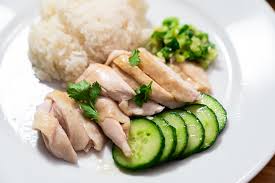

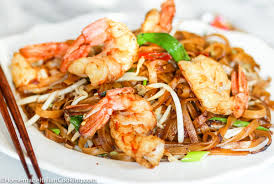

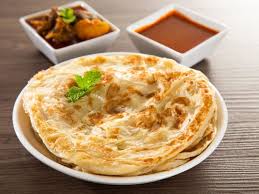
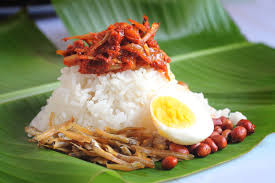
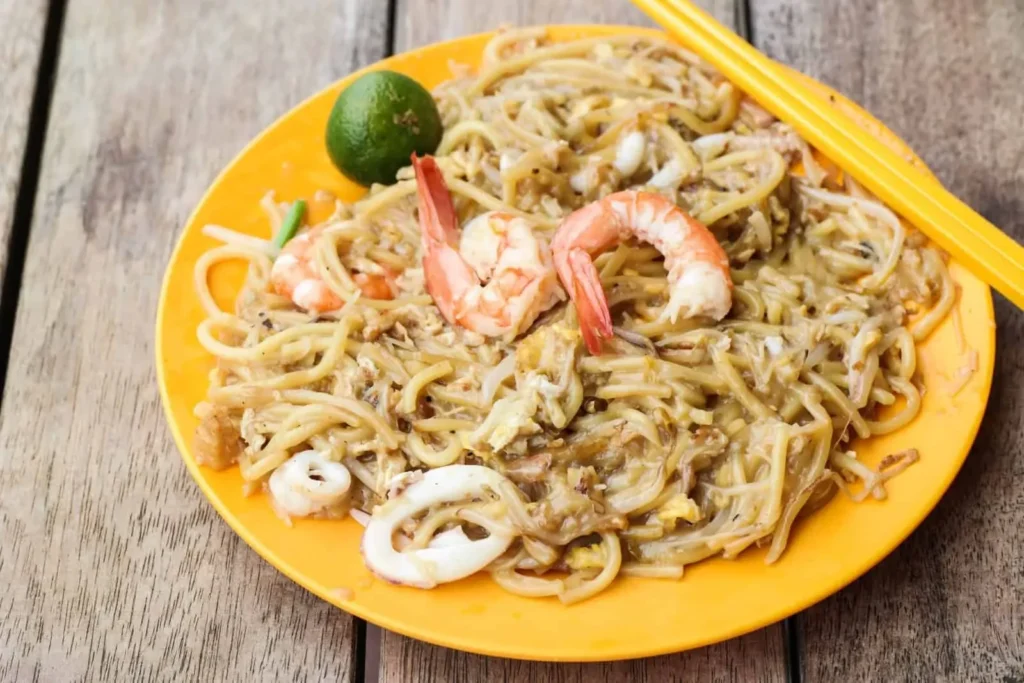
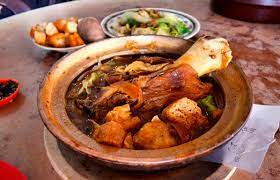
Festivals and Events
The calendar in Singapore is packed with festivals and events that celebrate its multicultural heritage and modern dynamism. Chinese New Year is marked with lion dances and lantern displays, while Hari Raya Puasa sees the Malay community celebrating with feasts and prayers. Deepavali, the Festival of Lights, lights up Little India with vibrant colors and decorations. The Singapore Grand Prix, a Formula 1 night race, and the Singapore International Festival of Arts are major highlights in the city-state’s event calendar.
Other notable events include the Chingay Parade, a grand street procession featuring colorful floats and performances, and the National Day Parade, which commemorates Singapore’s independence with a spectacular show of patriotism and pride. The city also hosts international events such as the Singapore Airshow, Art Stage Singapore, and the Singapore Biennale, attracting visitors and participants from around the world.
Shopping and Entertainment
Singapore is a shopper’s paradise, with options ranging from luxury boutiques on Orchard Road to bustling street markets in Bugis. The city is also known for its vibrant nightlife, with Clarke Quay and Marina Bay Sands offering a range of bars, clubs, and entertainment venues. For a unique experience, visitors can explore Haji Lane, a narrow street filled with quirky shops, cafes, and street art.
The city’s entertainment options are diverse, catering to different interests and age groups. Theatres and concert halls, such as the Esplanade and Victoria Theatre, host a variety of performances, from classical music and opera to contemporary dance and theatre. The Singapore Sports Hub is a premier destination for sports enthusiasts, featuring world-class facilities for events like football, rugby, and athletics.
Nature and Outdoor Activities
Despite its urban landscape, Singapore offers numerous opportunities for outdoor activities. The Southern Ridges, a 10-kilometer trail connecting parks and green spaces, provides stunning views of the city and its natural surroundings. Pulau Ubin, an offshore island, offers a glimpse into Singapore’s past with its rustic charm and outdoor activities like cycling and kayaking. The MacRitchie Reservoir is popular for its nature trails and treetop walk, offering a serene escape from the city’s hustle and bustle.
Singapore’s commitment to environmental sustainability is evident in its extensive network of parks and green spaces. The East Coast Park, stretching along the southeastern coast, is a favorite spot for picnics, barbecues, and water sports. The Bukit Timah Nature Reserve is home to diverse flora and fauna, including the island’s highest peak. The Singapore Botanic Gardens, a UNESCO World Heritage site, showcases a wide variety of plant species and offers a tranquil setting for relaxation and recreation.
Healthcare System
Singapore boasts a world-class healthcare system, consistently ranked among the best globally. The city-state offers high-quality medical services and facilities, attracting patients from around the region for treatments and procedures. Singapore’s healthcare system is supported by a robust network of public and private hospitals, specialist clinics, and primary care providers. The government places a strong emphasis on preventive care and health education, promoting healthy lifestyles and disease prevention.
Future Prospects
Looking ahead, Singapore continues to position itself as a global hub for innovation and sustainability. The government’s vision for a “Smart Nation” aims to harness technology to improve the quality of life for its residents. Initiatives in areas like smart transportation, digital healthcare, and sustainable urban living are set to shape Singapore’s future, ensuring that it remains at the forefront of global progress.
Conclusion
In summary, Singapore is a remarkable city-state that seamlessly blends tradition and modernity. Its rich history, cultural diversity, economic prowess, and commitment to sustainability make it a truly unique destination. Whether exploring its vibrant neighborhoods, savoring its culinary delights, or marveling at its architectural wonders, visitors to Singapore are sure to be captivated by its charm and dynamism.
let’s enjoy few years on earth with peace and happiness….✍🏼🙏

